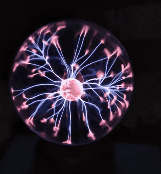Content of the study
Click here to see past research content.
|
Laser-based plasma measurement technology
Using a laser to see inside the plasma
- Plasma glows in a fascinating way, but it is impossible to know what is happening inside it just by looking at it from the outside. In our laboratory, we are developing a method of investigating the internal state of plasma by shooting laser light into it. Atoms, molecules, electrons and fine particles in the plasma absorb and scatter the laser light. In addition, the atoms and molecules in the plasma have a different energy level structure from that of atoms and molecules in a vacuum. By investigating these, it is possible to obtain various quantities inside the plasma that cannot be known by other methods. Being able to measure quantities that other researchers cannot measure is a huge advantage in the race for scientific discovery, and it is thanks to this that our laboratory has become a world-renowned research group.
- Laser-Induced Fluorescence (LIF)
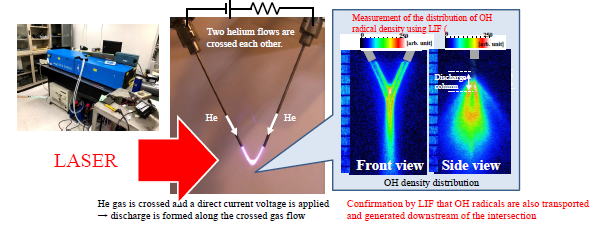
Related Papers
Efficient production and transport of OH radicals in spatial afterglow
of atmospheric-pressure DC glow discharge using intersecting helium flows
N. Shirai, H. Owada and K. Sasaki,
Plasma Sources Sci. Technol. 30 125012 (2021) LINK
- Detection of hydrated electrons by laser-induced desolvation
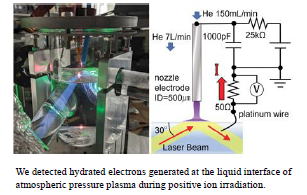
Related Papers
Detection of solvated electrons below interface between atmospheric-pressure
plasma and water by laser-induced desolvation Y. Inagaki and K. Sasaki
Plasma Sources. Sci. Technol. 31 03LT02 (2022)
LINK
- Measurement of negative ions using laser desorption
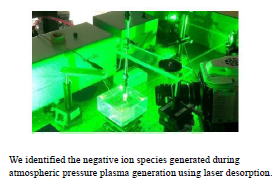
Related Papers
Negative ion species in atmospheric-pressure helium dc glow discharge produced
in ambient air
K. Sasaki, R. Hosoda and N. Shirai
Plasma Sources Sci. Technol. 29, 085012 (2020)
LINK
|
- Development of atmospheric pressure plasma device
Developing various plasma sources that have never existed before
- Atmospheric pressure plasma sources that do not require a vacuum device have a wide range of potential applications. In the development of an atmospheric pressure plasma jet that does not use rare gases, we have succeeded in observing green plasma accompanied by aurora emissions (atomic oxygen 1D−1S forbidden transition: wavelength 557.73nm) using a small amount of oxygen gas.
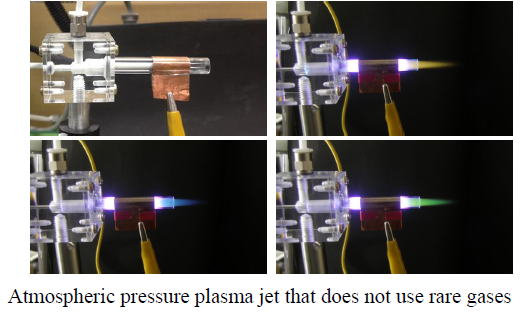
Related Papers
Observation of 1D - 1S forbidden optical emission of atomic oxygen in atmospheric-pressure
N2/O2 plasma jet
K. Sasaki, S. Nishiyama and N. Shirai
Contrib. Plasma Phys. e202000061 (2020)
LINK
|
- Plasma Environmental Technology
Ammonia synthesis using plasma
- Ammonia is an important substance that is not only used for nitrogen fixation
in plants, but is also being considered for use as an energy carrier in
recent years. It has been synthesized using the large-scale Haber-Bosch
method, but we are developing plasma equipment for synthesis on a medium-
and small-scale level.
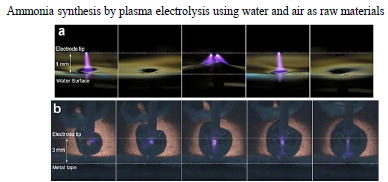
Related Papers
Catalyst-free synthesis of ammonia using dc-driven atmospheric-pressure
plasma in contact with water
M Ramoy, N Shirai and K Sasaki
J. Phys. D: Appl. Phys. 57, 01LT01 (2024)
LINK
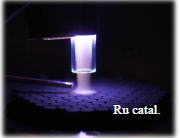
Related Papers
Contribution of vibrational excited molecular nitrogen to ammonia synthesis
using an atmospheric-pressure plasma jet
A. Miyake, N. Shira, K. Sasaki
J. Appl. Phys. 135, 213301 (2024)
LINK
|
- Plasma Organic Synthesis
Direct Conversion of Benzene to Phenol Using Plasma-Liquid Interaction
- We have successfully converted benzene directly to phenol using only water, air, and electricity, without a catalyst, by utilizing the interaction between plasma and liquids.
- [Patent pending]
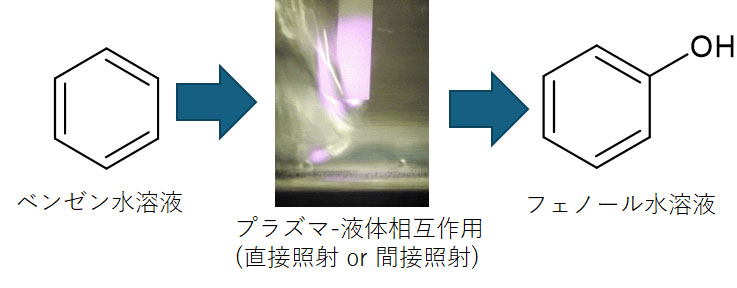
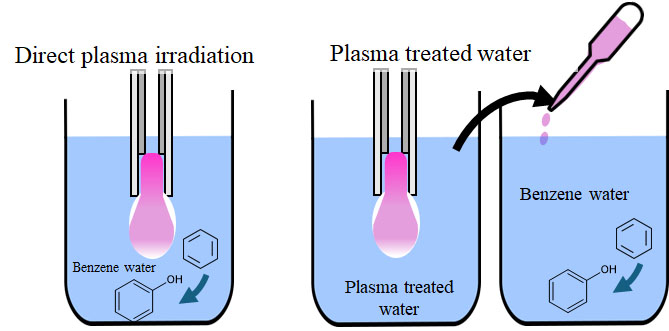
Related Papers
One-step conversion of benzene to phenol in plasma-irradiated benzene solution
Y. Inagaki, Y. R. Hayashi, K. Sasaki, S. Takakusagi and N. Shirai
Submitted to JAP
|
- Plasma-liquid interaction
New research topics for plasma
- Research into the interaction between plasma and liquids is attracting attention, and it has now become possible to investigate the interaction between low-pressure plasma and water by introducing water as a water jet into a vacuum, whereas previously water could only be handled at atmospheric pressure. So far, we have clarified the generation of gas and the detection of hydrated electrons.
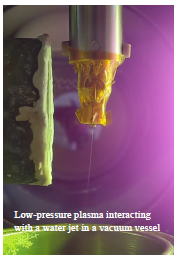 
Related Papers
Detection of hydrated electrons in water-jet immersed in low-pressure plasma by laser-induced desolvation
Y. Inagaki and K. Sasaki
Plasma Source Sci. Technol. 32 065019 (2023)
LINK
Related Papers
Observation of currentless redox reactions on surface of water jet immersed in low-pressure plasma
T. Ito, T. Sakka and K. Sasaki
Plasma Sources. Sci. Technol. 31 06LT02 (2022)
LINK
|
- Plasma nano-technology
- A nanoparticle process that can only be done with plasma
- We have succeeded in synthesizing core-shell nanoparticles by depositing an amorphous carbon film around tin nanodroplets held in a capacitively coupled plasma (CCP). The synthesized core-shell particles can be used for latent heat thermal storage.

Related Papers
Synthesis of core–shell nanoparticles with liquid core using magnetron sputtering and capacitively coupled dusty plasmas
M. Murugesh and K. Sasak,
Jpn J. Appl. Phys. 63, 056003 (2024)
LINK
|
- Pioneering new phenomena using plasma
Elucidation of the self-organization mechanism of plasma emission
- When DC discharge plasma is generated under certain conditions, a self-organization phenomenon is observed in which the light emitted from the anode surface forms a pattern. It was previously thought that this phenomenon could only be observed in atmospheric pressure plasma using a water electrode, but we have confirmed that various light emission patterns can also be observed in low-pressure plasma using a metal electrode, and we are working to elucidate the mechanism.

Related Papers
Correlation between temperature distribution and changes in self-organized
luminous pattern in an atmospheric pressure DC glow discharge with sheath
gas flow
T. Miyazaki, K. Sasaki and N. Shirai
Plasma Sources Sci. Techol. 33, 115007 (2024)
LINK
|
- Collaboration with the medical field
Surgical smoke generated by an electric scalpel
- We investigated the gas temperature from plasma emissions in order to clarify
the mechanism of the generation of surgical smoke produced by the electrosurgical
unit used during surgery. Surgical smoke has been pointed out as a risk
of health damage and infection due to inhalation exposure of patients and
medical staff. We borrowed an electrosurgical unit from Hokkaido University
Hospital for the experiment.
 |
- Promotion of joint research
- We would like to promote joint research with both private companies and
public institutions. We have collaborated with a number of private companies
and with the Fusion Science Institute. In the future, we would like to
promote large-scale joint research, especially with private companies.
Please feel free to contact us for more information.
|
